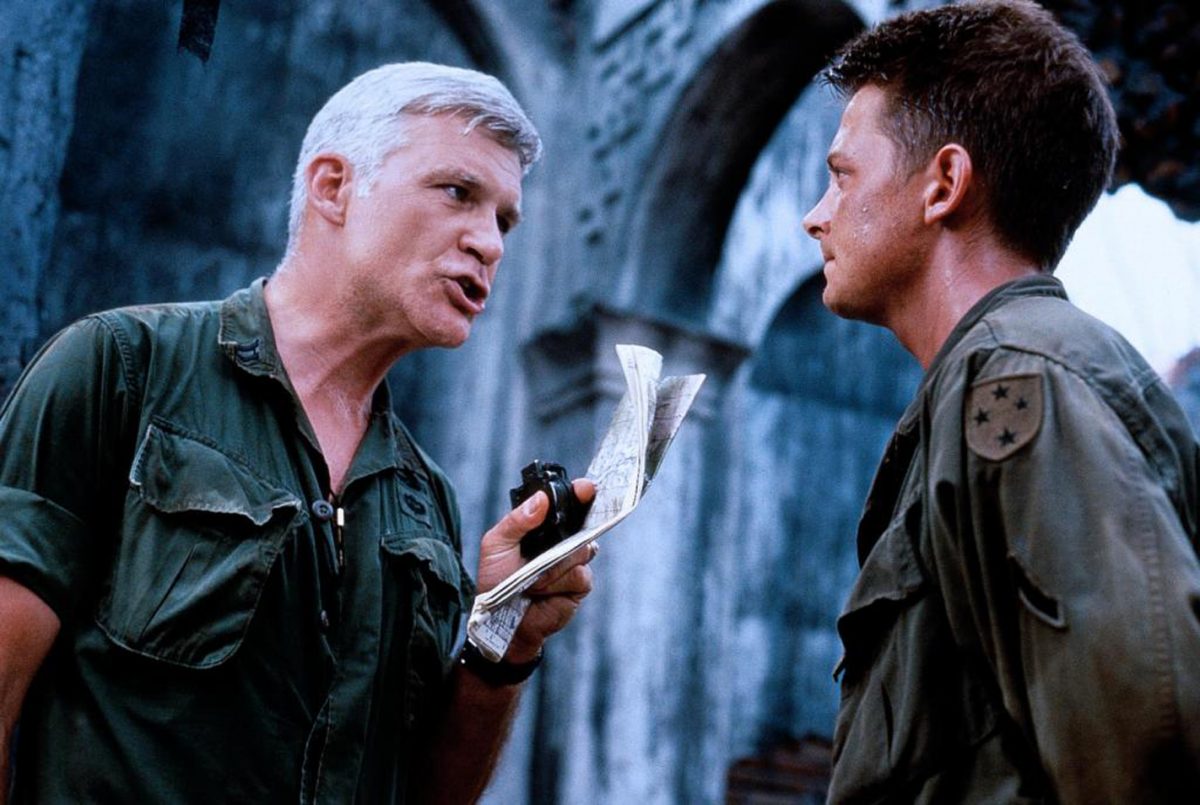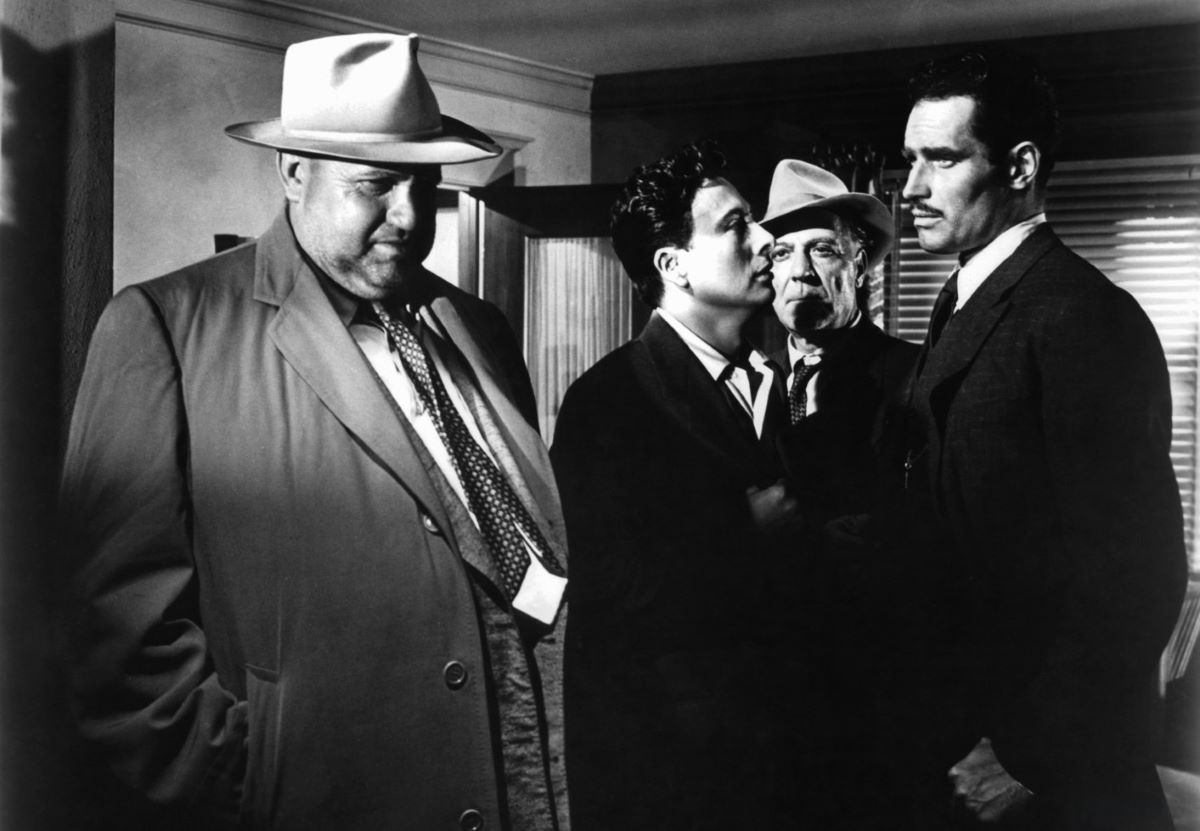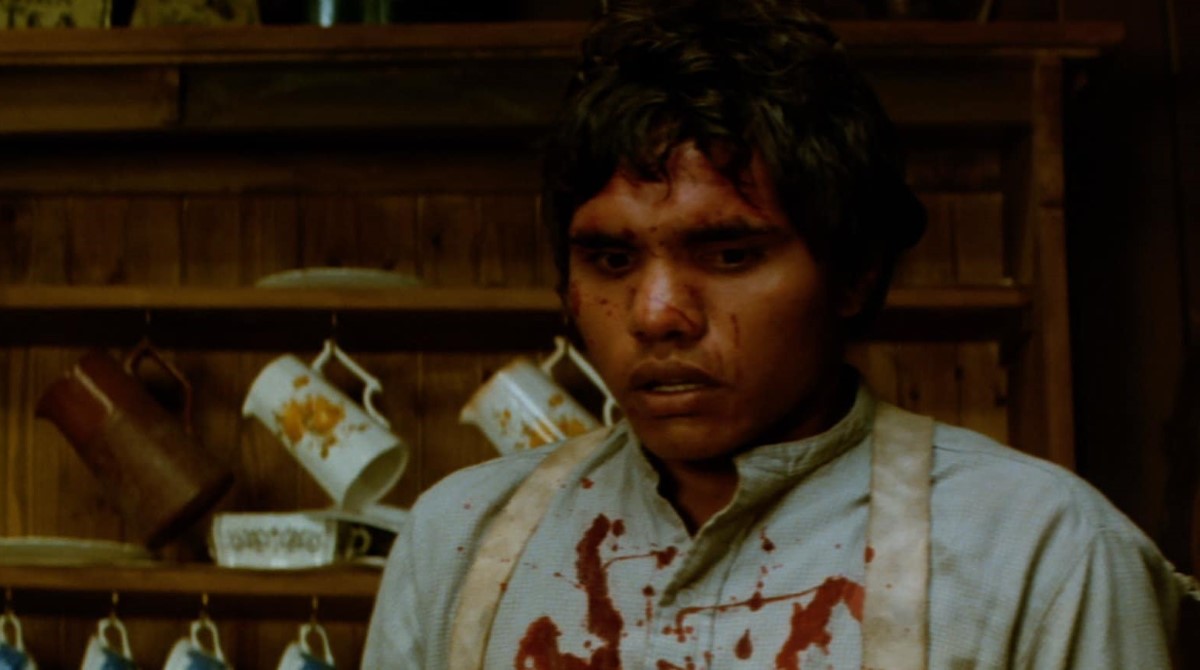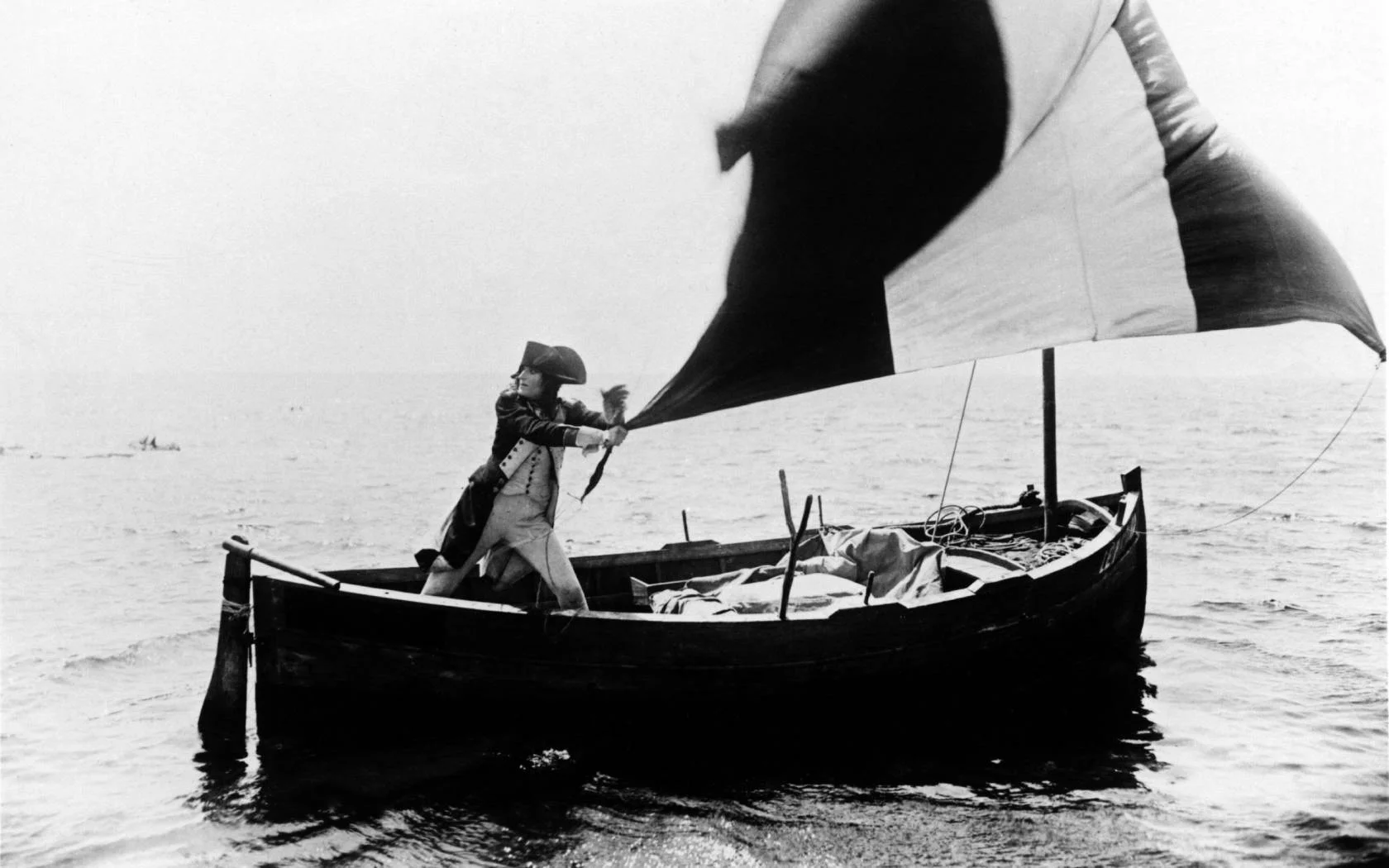A Wounded Apparition
by Pauline Kael
Some movies—Grand Illusion and Shoeshine come to mind, and the two Godfathers and The Chant of Jimmie Blacksmith and The Night of the Shooting Stars—can affect us in more direct, emotional ways than simple entertainment movies. They have more imagination, more poetry, more intensity than the usual fare; they have large themes, and a vision. They can leave us feeling simultaneously elated and wiped out. Overwhelmed, we may experience a helpless anger if we hear people mock them or poke holes in them in order to dismiss them. The new Casualties of War has this kind of purity. If you meet people who are bored by movies you love such as The Earrings of Madame De . . . or The Unbearable Lightness of Being, chances are you can brush it off and think it’s their loss. But this new film is the kind that makes you feel protective. When you leave the theatre, you’ll probably find that you’re not ready to talk about it. You may also find it hard to talk lightly about anything.
Casualties of War is based on a Vietnam incident of 1966 that was reported in The New Yorker by the late Daniel Lang, in the issue of October 18, 1969. (The article was reprinted as a book.) Lang gave a calm, emotionally devastating account of a squad of five American soldiers who were sent on a five-day reconnaissance mission; they kidnapped a Vietnamese village girl, raped her, and then covered up their crime by killing her. The account dealt with the kind of gangbang rape that the Vietnam War had in common with virtually all wars, except that the rapists here, unable in general to distinguish Vietcong sympathizers from other Vietnamese, didn’t care that the girl wasn’t Vietcong. This indifference to whether a candidate for rape is friend or foe may not really be that much of an exception; it may be frequent in wartime. What’s unusual here may simply be that a witness forced the case into the open and it resulted in four court-martial convictions.
A number of movie people hoped to make a film of the Lang article, and, though it was commercially risky, Warners bought the rights and announced that Jack Clayton would make the picture—an arrangement that fell apart. Plans involving John Schlesinger and other directors also collapsed, but the article may have been the (unofficial) taking-off point for one film that did get made: Elia Kazan’s low-budget, 16-mm. The Visitors, of 1972, which Kazan himself financed. He used a prosecution for rape and murder as background material to explain why a couple of ex- servicemen released from Leavenworth on a technicality were out to get the former buddy who had testified against them. Eventually, in 1987, after Brian De Palma had a success with The Untouchables, he was able to persuade Paramount to pick up the rights to the Lang story, which he’d had in the back of his mind since 1969. A script was commissioned from the playwright David Rabe, the quondam Catholic and Vietnam vet who had written Streamers and other plays about the war (and had wanted to work on this material for some years), but, when De Palma was all set to film it in Thailand, Paramount pulled out. The picture finally got under way at Columbia—the first picture to be approved by the company’s new president,’ Dawn Steel. Whatever else she does, she should be honored for that decision, because twenty years later this is still risky material.
Lang’s factual narrative is based on conversations with Eriksson, the witness who testified against the other men, and on the court-martial records. (The names were changed to protect everyone’s privacy.) Rabe’s script follows it closely, except that Rabe dramatizes the story by creating several incidents to explain what led to the rape and what followed.
When Eriksson (Michael J. Fox), who has just arrived in Vietnam, is out in a jungle skirmish at night, a mortar explosion shifts the earth under him; he drops down, caught, his feet dangling in an enemy tunnel. De Palma photographs the scene as if it were an ant farm—he shows us aboveground and underground in the same shot. Eriksson yells for help, and in the instant that a Vietcong, who has been crawling toward the dangling legs, slashes at them with his knife, Sergeant Meserve (Sean Penn) pulls Eriksson out. A minute later, Meserve saves him again from that Vietcong, who has come out of the hole to get him.
In the morning, the soldiers enter a peaceful-looking village; they stand near the mud-and-bamboo huts and see a stream and bridges and, a little way in the distance, paddy fields where women and elderly men are working, under the shadow of harsh, steep mountains. The tiered compositions are pale, like Chinese ink paintings. Throughout the movie, everything that’s beyond the understanding of the Americans seems to be visualized in layered images; this subtle landscape reaching to Heaven is the site of the random violence that leads to the rape.
Smiling and eager, Eriksson walks behind two water buffalo, helping an ancient farmer with his plowing. Brownie (Erik King), a large-spirited, joshing black soldier, who is Meserve’s pal—they’re both due to go home in less than a month—cautions Eriksson about his exposed position on the field and walks him back to where the Sarge is taking time out, with the other men. They’re all relaxed in a clearing near this friendly village, but we become ominously aware that the villagers in the paddies are evaporating. Brownie is standing with an arm around Meserve when the pastoral scene is ruptured: bullets tear into Brownie from a V.C. across the stream. An instant later, a guerrilla who’s dressed as a farmer runs toward the group and flings a grenade at them. Meserve spots him and warns Eriksson, who turns and fires his grenade launcher; by luck, he explodes the V.C.’s grenade. Then the screen is divided by a couple of split-focus effects: in one, Eriksson, in closeup, rejoices at his freak shot and is so excited that he lets the grenade- thrower slip away; in another, Eriksson is staring the wrong way while behind him a couple of women open a tunnel for a V.C., who disappears into it. Meanwhile, Meserve fires his M-16 rifle, and then, his face showing his agony, he uses his hand like a poultice on Brownie’s wound. A soldier radios for medical help, and Meserve, never letting go of his friend, keeps reassuring him until he’s loaded on a chopper.
In these early scenes, Meserve is skillful and resourceful. He’s only twenty years old, and as Sean Penn plays him he has the reckless bravery of youth. He’s genuinely heroic. But Brownie dies (as Meserve knew he would), and back at the base camp the men, who have readied themselves for a visit to a brothel, are stopped and told that the village adjoining the base has been declared off limits. It’s too much for Meserve, who has been put in charge of the five-day mission to check out a mountain area for signs of Vietcong activity, and later that night he finishes briefing his men by telling them to be ready to leave an hour early, so they can detour to a village to “requisition” a girl. Eriksson half thinks the Sarge is kidding. It takes a while for him (and for us) to understand that Meserve is not the man he was; only a day has passed since his friend was killed, but he has become bitter and vindictive—a conscious trickster and sinner.
Has something in Meserve snapped? Paul Fussell writes in his new book Wartime that in the Second World War the American military “learned that men will inevitably go mad in battle and that no appeal to patriotism, manliness, or loyalty to the group will ultimately matter.” So “in later wars things were arranged differently,” he explains. “In Vietnam, it was understood that a man fulfilled his combat obligation and purchased his reprieve if he served a fixed term, 365 days, and not days in combat either but days in the theatre of war. The infantry was now treated somewhat like the Air Corps in the Second War: performance of a stated number of missions guaranteed escape.” Meserve, who has led dozens of combat patrols, has reached his limit with only a few weeks to go; he turns into an outlaw with a smooth justification for anything. (The kidnapping is a matter of cool planning: the girl can be explained as a “V.C. whore” taken for interrogation.) When Meserve’s five-man patrol, having set out before dawn, arrives at the village he selected in advance, he and Corporal Clark (Don Harvey) peer into one hut after another, shining a flashlight on the sleeping women until they find one to their taste—Oanh (Thuy Thu Le), a girl of eighteen or twenty.
The terrified girl clings to her family. Clark carries her out, and her mother and sister come rushing after him, pleading in words that are just jabber to the soldiers, who want to get moving before it’s light. They’ve taken only a few steps when the mother desperately hands them the girl’s scarf. It’s a pitiful, ambiguous gesture. She seems to want Oanh to have the comfort of this scarf—perhaps it’s new, perhaps it’s the only token of love the mother can offer her daughter. Eriksson says “Oh Jesus God” when he sees the men’s actions, even before the mother holds out the scarf. Then he mutters helplessly, “I’m sorry.” He’s sick with grief, and we in the audience may experience a surge of horror; we know we’re watching something irrevocable. Clark, a crude, tall kid who suggests a young Lee Marvin, is irritated by the girl’s crying and whimpering, and he stuffs the scarf into her mouth, to gag her.
The men climb high above the valleys and set up a temporary command post in an abandoned hut in the mountains; it’s here that the sobbing, sniffling girl is brutalized. (Thereafter, she’s referred to as “the whore” or “the bitch.”) Eriksson refuses his turn to rape her, but he can’t keep the others from tying her up, beating her, and violating her. He himself is assaulted when he tries to stop them from killing her. Eriksson is brave, but he’s also inexperienced and unsure of himself. In the few minutes in which he’s alone with the girl and could help her escape, he delays because he’s afraid of being charged as a deserter. The opportunity passes, and we can see the misery in his eyes. Meserve sees it, too—sees that Eriksson finds him disgusting, indecent. And he begins to play up to Eriksson’s view of him: he deliberately turns himself into a jeering, macho clown, taunting Eriksson, questioning his masculinity, threatening him. Meserve starts to act out his madness; that’s the rationale for Penn’s theatrical, heated-up performance. He brings off the early, quiet scenes, too. When Meserve shaves after learning of Brownie’s death, we see that the hopefulness has drained out of him. Suddenly he’s older; the radiance is gone. Soon he’s all calculation. Although he was coarse before, it was good-humored coarseness; now there’s cynical, low cunning in it. Fox, in contrast, uses a minimum of showmanship. He gives such an interior performance that it may be undervalued. To play a young American in Vietnam who’s instinctively thoughtful and idealistic—who’s uncorrupted—is excruciatingly difficult, yet Fox never lets the character come across as a prig. The two men act in totally different styles, and the styles match up.
And, whatever the soldiers say or do, there’s the spectre of the dazed, battered girl ranting in an accusatory singsong. The movie is haunted by Oanh long before she’s dead. The rapists think they’ve killed her, but she rises; in our minds, she rises again and again. On the basis of the actual soldiers’ descriptions of the girl’s refusal to accept death, Daniel Lang called her “a wounded apparition,” and De Palma and his cinematographer, Stephen H. Burum, give us images that live up to those words—perhaps even go beyond them. Trying to escape along a railway trestle high up against the wall of a canyon, Oanh might be a Kabuki ghost. She goes past suffering into the realm of myth, which in this movie has its own music—a recurring melody played on the panflute.
That lonely music keeps reminding us of the despoiled girl, of the incomprehensible language, the tunnels, the hidden meanings, the sorrow. Eriksson can’t forgive himself for his failure to save Oanh. The picture shows us how daringly far he would have had to go to prevent what happened; he would have had to be lucky as well as brave. This is basically the theme that De Palma worked with in his finest movie up until now, the political fantasy Blow Out, in which the protagonist, played by John Travolta, also failed to save a young woman’s life. We in the audience are put in the man’s position: we’re made to feel the awfulness of being ineffectual. This lifelike defeat is central to the movie. (One hot day on my first trip to New York City, I walked past a group of men on a tenement stoop. One of them, in a sweaty sleeveless T-shirt, stood shouting at a screaming, weeping little boy perhaps eighteen months old. The man must have caught a glimpse of my stricken face, because he called out, “You don’t like it, lady? Then how do you like this?” And he picked up a bottle of pink soda pop from the sidewalk and poured it on the baby’s head. Wailing sounds, much louder than before, followed me down the street.)
Eriksson feels he must at least reveal what happened to Oanh and where her body lies. He’s a dogged innocent trying to find out what to do; he goes to the higher-ups in the Army and gets a load of doubletalk and some straight talk, too. The gist of it is that in normal (i.e., peacetime) circumstances Meserve would not have buckled like this, and they want Eriksson to keep quiet about it. But he can’t deal with their reasoning; he has to stick with the rules he grew up with. He moves through one layer of realization to the next; there’s always another, hidden level. The longer Eriksson is in Vietnam, the more the ground opens up beneath him. He can’t even go to the latrine without seeing below the floor slats a grenade that Clark has just put there, to kill him.
De Palma has mapped out every shot, yet the picture is alive and mysterious. When Meserve rapes Oanh, the horizon seems to twist into a crooked position; everything is bent away from us. Afterward, he goes outside in the rain and confronts Eriksson, who’s standing guard. Meserve’s relationship to the universe has changed; the images of nature have a different texture, and when he lifts his face to the sky you may think he’s swapped souls with a werewolf. Eriksson is numb and demoralized, and the rain courses down his cheeks in slow motion. De Palma has such seductive, virtuosic control of film craft that he can express convulsions in the unconscious.
In the first use of the split-focus effect, Eriksson was so happy about having hit the grenade that he lost track of the enemy. In a later use of the split effect, Eriksson tries to save Oanh from execution by creating a gigantic diversion: he shoots his gun and draws enemy fire. What he doesn’t know is that Clark, who is behind him, is stabbing her. He didn’t know what was going on behind him after he was rescued from the tunnel, either. This is Vietnam, where you get fooled. It’s also De Palmaland. There are more dimensions than you can keep track of, as the ant-farm shot tells you. And the protagonist who maps things out to protect the girl from other men (as Travolta did) will always be surprised. The theme has such personal meaning for the director that his technique—his own mapping out of the scenes—is itself a dramatization of the theme. His art is in controlling everything, but he still can’t account for everything. He plans everything and discovers something more.
De Palma keeps you aware of the whole movie as a composition. Like Godard, he bounces you in and out of the assumptions about movies that you have brought with you to the theatre. He stretches time and distance, using techniques that he developed in horror-fantasy and suspense pictures, but without the pop overtones. He shifts from realism to hallucinatory Expressionism. When the wounded Brownie is flown out by helicopter, the movement of the yellow-green river running beneath him suggests being so close up against a painting that it’s pure pigment. When Eriksson is flown out, it’s at an angle you’ve never seen before: he looks up at the rotor blades as they darken the sky. These helicopters are on drugs.
Great movies are rarely perfect movies. David Rabe wrestles with the ugly side of male bonding; he’s on to American men’s bluster and showoff, and his scenes certainly have drive. But his dialogue is sometimes explicit in the grungy- poetic mode of “important” American theatre. The actual Eriksson was in fact (as he is in the movie) married and a Lutheran. He was also, as Daniel Lang reported, articulate. This is Eriksson talking to Lang:
We all figured we might be dead in the next minute, so what difference did it make what we did? But the longer I was over there, the more I became convinced that it was the other way around that counted—that because we might not be around much longer, we had to take extra care how we behaved.
Rabe uses these remarks but places them maladroitly (as a response to something that has just happened), and he makes them sound like the stumbling thoughts of a folksy, subliterate fellow reaching for truth:
I mean, just because each one of us might at any second be blown away, everybody’s actin’ like we can do anything, man, and it don’t matter what we do—but I’m thinkin’ maybe it’s the other way around, maybe the main thing is just the opposite. Because we might be dead in the next split second, maybe we gotta be extra careful what we do—because maybe it matters more—Jesus, maybe it matters more than we even know.
This passage is the heaviest hammering in the movie (and the poorest piece of staging), but it’s also a clear indication of Rabe’s method. De Palma works directly on our emotions. Rabe’s dialogue sometimes sounds like the work of a professional anti-war dramatist trying to make us think. Still, there’s none of the ego satisfaction of moral indignation that is put into most Vietnam films and what De Palma does with the camera is so powerful that the few times you wince at the dialogue are almost breathers.
This movie about war and rape—De Palma’s nineteenth film—is the culmination of his best work. In essence, it’s feminist. I think that in his earlier movies De Palma was always involved in examining (and sometimes satirizing) victimization, but he was often accused of being a victimizer. Some moviegoers (women, especially) were offended by his thrillers; they thought there was something reprehensibly sadistic in his cleverness. He was clever. When people talk about their sex fantasies, their descriptions almost always sound like movies, and De Palma headed right for that linkage: he teased the audience about how susceptible it was to romantic manipulation. Carrie and Dressed to Kill are like lulling erotic reveries that keep getting broken into by scary jokes. He let you know that he was jerking you around and that it was for your amused, childish delight, but a lot of highly vocal people expressed shock. This time, De Palma touches on raw places in people’s reactions to his earlier movies; he gets at the reality that may have made some moviegoers too fearful to enjoy themselves. He goes to the heart of sexual victimization, and he does it with a new authority. The way he makes movies now, it’s as if he were
Cruelty is not taken lightly in this movie. In the audience, we feel alone with the sounds that come out of Oanh’s throat; we’re alone with the sight of the blood clotting her nose. The director has isolated us from all distractions. There are no plot subterfuges; war is the only metaphor. The soldiers hate Vietnam and the Vietnamese for their frustrations, their grievances, their fear, and they take their revenge on the girl. When Brownie is shot, Eriksson, like Meserve and the others, feels that they’ve come to fight for the defense of the villagers who knew about the hidden guerrillas and could have warned them. They feel betrayed. Could the villagers have warned them without being killed themselves? It’s doubtful, but the soldiers are sure of it, and for most of them that’s justification enough for what they do to Oanh. The movie doesn’t give us the aftermath: Oanh’s mother searched for her and got South Vietnamese troops to help in the search; the mother was then taken away by the Vietcong, accused of having led the troops to a V.C. munitions cache. De Palma simply concentrates on what happened and why.
Meserve and Clark and one of the other men feel like conquerors when they take Oanh with them. They act out their own war fantasy; they feel it’s a soldier’s right to seize women for his pleasure. Comradeship is about the only spiritual value these jungle fighters still recognize; they’re fighting for each other, and they feel that a gangbang relieves their tensions and brings them closer together. When Clark slings Oanh over his shoulder and carries her out of her family’s hut, he’s the hero of his own comic strip. These men don’t suffer from guilt—not in the way that Eriksson suffers for the few minutes of indecisiveness in which he might have saved Oanh’s life. He’s turned from a cheerful, forthright kid into a desolate loner.
At the end, the swelling sound of musical absolution seems to be saying that Eriksson must put his experiences in Vietnam behind him—that he has to accept that he did all he could, and go on without always blaming himself. De Palma may underestimate the passion of his images: we don’t believe that Eriksson can put Oanh’s death into any kind of sane perspective, because we’ve just felt the sting of what he lived through. He may tell himself that he did all he could, but he feels he should have been able to protect her. The doubt is there in his eyes. (I hear that baby’s cries after almost fifty years.) What makes the movie so eerily affecting? Possibly it’s Oanh’s last moments of life—the needle- sharp presentation of her frailty and strength, and how they intertwine. When she falls to her death, the image is otherworldly, lacerating. It’s the supreme violation.
New Yorker, August 21, 1989





